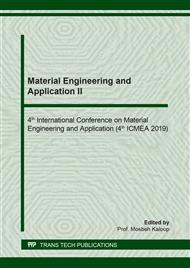p.327
p.335
p.340
p.346
p.355
p.363
p.369
p.375
p.381
Analogy of Non-Destructive Tests for the Detection of Defectologies in Aluminium Cylinder Heads
Abstract:
The present experimental study proposes an alternative for diagnostic methods and quality control in cylinder head defectology. The composition of the material is characterized by spectrometry, obtaining an approximation of aluminum 2117. For the detection of defectologies, non-destructive tests (NDT) are carried out, applicable to cylinder heads such as: visual inspection (VT) under conditions of standard EN 13018, penetrating inks (PT) visible according to ASTM E 165-02 and others not yet included in the vehicle fleet.; infrared thermography (IRT) with equipment specifications under ISO 18434 - 1, ultrasound (UT) based on standard EN 583 for the use of the equipment and Eddy currents (ECT) conforming standard ISO 15548, the analysis is carried out on the flat surface of the cylinder head, combustion chamber, valve seats and intake - exhaust ports, the different defects found are: cracks, fissures, discontinuities and pitting, showing longitudinal dimensions from 0,8 [mm]. To determine the reliability of results, an analogy is made of the tests mentioned in the same defect, the method with the greatest scope is Eddy currents as it has more inspection coverage with respect to the remaining tests; the simulation of computer-aided engineering CAE of the defect is performed, applying an AC magnetic analysis to identify the flux density, current density and visualize how the Eddy currents act in the cylinder head. After this research, artificial intelligence will be used as a complementary diagnosis, to predict defectologies not perceived by the human eye and to obtain a better analysis of defectologies in cylinder heads.
Info:
Periodical:
Pages:
355-362
Citation:
Online since:
May 2020
Authors:
Keywords:
Price:
Сopyright:
© 2020 Trans Tech Publications Ltd. All Rights Reserved
Share:
Citation:


